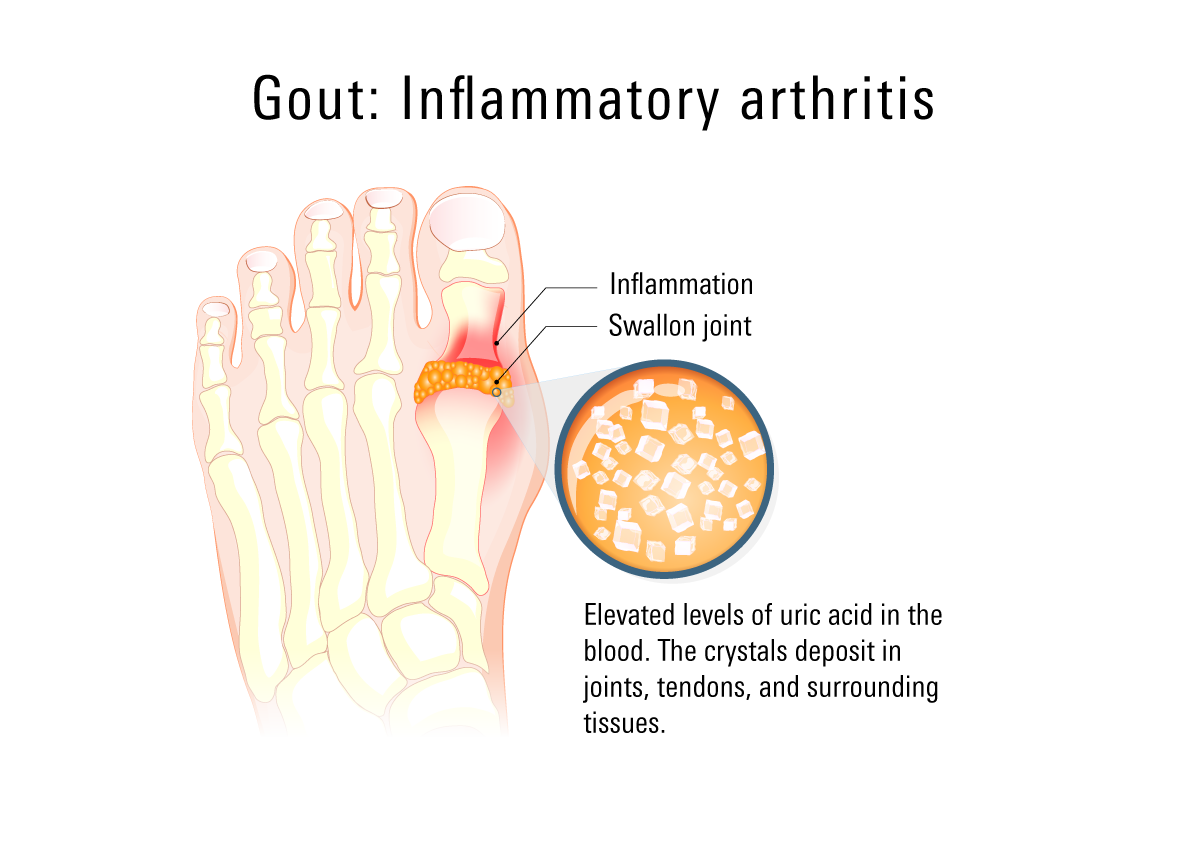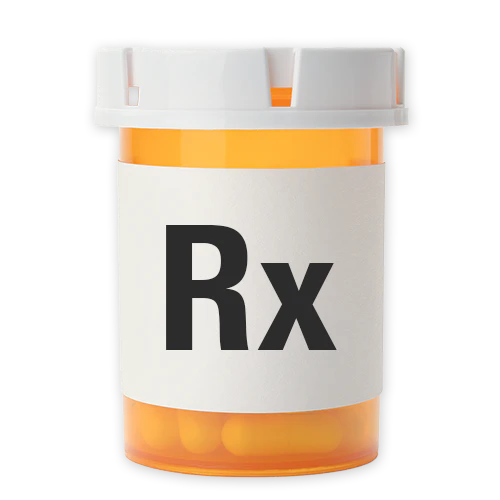Top 9 Drugs To Combat Gout
Approximately 9.2 million Americans suffer from gout. What exactly is gout?
Gout is a form of arthritis caused by the crystallization of uric acid (UA) in your joints. Uric acid is a byproduct of purine metabolism. One of the base pairs of DNA is made up of purines, which are found in many foods.
Gout attacks generally begin suddenly. One joint is typically affected by gout, most frequently your big toe (the metatarsophalangeal joint).

You may not have any symptoms when uric acid levels rise. If uric acid crystallizes in your joints, you may experience a severe gout attack with burning and swelling. These gout attacks can damage your joints, tendons, and other tissues if they are not treated promptly.
A normal serum uric acid level in women is 2-6.5 mg/dL and 3.5-7.2 mg/dL in men.
What are the symptoms of gout?
A gout flare-up can occur at any time and last for days or even weeks. These flares are usually followed by prolonged remissions which last weeks, months, or even years before another flare occurs.
Common signs and symptoms
- Intense pain in the affected joint (generally occurs in the big toe, but can also occur in your knee(s), elbow(s), ankle(s), finger(s), and/or wrist(s).
- Difficulty moving/using the affected joint
- Swelling
- Inflammation and/or redness
- Burning
- Warmth and/or heat
- Tenderness
How is gout diagnosed?
- A sample of synovial (joint) fluid can be examined under a microscope to see whether uric acid crystals are present in addition to your uric acid levels.
- An image of the afflicted joint can be obtained by imaging procedures, such as an X-ray, an MRI, or a CT scan.
What are the risk factors for gout?
- Sex (men are more likely to develop gout than women)
- Obesity
- Diabetes (type 2)
- Excessive consumption of alcohol (especially beer)
- High blood pressure (hypertension)
- Chronic kidney disease (CKD)
- Lead intoxication
- Advanced age
- Family history of gout
- Diet (i.e. organ meats, high fructose corn syrup, and alcohol)
- Taking medications that increase your uric acid levels (I.e. low-dose aspirin and blood pressure medications, including thiazide diuretics, angiotensin-converting enzyme (ACE) inhibitors, and beta blockers)
What medications are used to treat gout?
There is no medication for asymptomatic high uric acid levels (hyperuricemia). Pain and inflammation from acute attacks are the main targets of the medications.
Your uric acid levels must be less than 6 mg/dL in order to use medications to treat acute (sudden) attacks and prevent reoccurring attacks. Preventive (prophylactic) medications are used to decrease uric acid levels and prevent attacks from occuring again.
The top 9 medications for acute gout attack
Colchicine
1. Colchicine (Colcrys): 1.2 mg taken by mouth (this includes two 0.6mg tablets), followed by 0.6 mg in 1 hour. Start the medication within 36 hours of symptom onset.
Side effects: diarrhea, nausea, vomiting, stomach pain, decreased bone marrow activity (otherwise referred to as myelosuppression), muscle pain and/or weakness
NSAIDs (Nonsteroidal anti-inflammatory drugs)
2. Indomethacin (Indocin): 50 mg taken by mouth, three times a day until the attack is resolved
3. Naproxen (Naprosyn): 750 mg taken once by mouth, the dose may be reduced to 250 mg every 8 hours until the attack is resolved
4. Sulindac (Clinoril): 200 mg taken by mouth twice a day until the attack is resolved
5. Celecoxib (Celebrex): 800 mg taken once by mouth, then 400 mg taken once (may be taken later in the day), then 400 mg taken twice a day for 1 week
Steroids (Corticosteroids)
6. Prednisone: 0.5 mg/kg/day taken by mouth for 5–10 days
Prophylactic (preventative) gout treatment
All individuals with gout who have had a gout attack, have infrequent symptoms, or have tophi, which are uric acid crystals that develop under the skin in long-term gout, should begin chronic urate-lowering therapy.
Xanthine oxidase inhibitors (medications used to reduce uric acid production)
7. Allopurinol (Zyloprim): Dose may be started at 100 mg daily (dose can be titrated up if necessary)
Side effects: rash, acute gout attacks, nausea, diarrhea
8. Febuxostat (Uloric): The dose may be started at 40 mg daily (this dose can be increased to 80 mg if your uric acid is not less than 6mg/dL at 2 weeks)
Side effects: rash, nausea, joint pain
Uricosurics (medications used to prevent the reabsorption of uric acid in your kidneys, increasing uric acid excretion)
9. Probenecid: 250 mg taken by mouth twice a day (this dose can be increased to 2 grams/day)
Side effects: chest pain, joint pain, allergic reactions, new gout flares, nausea, vomiting, constipation

